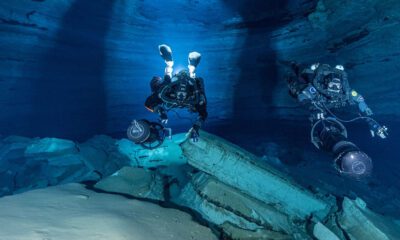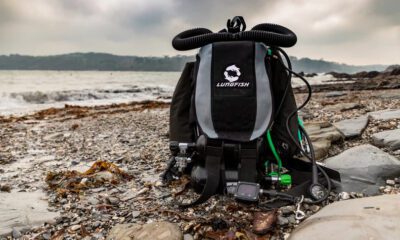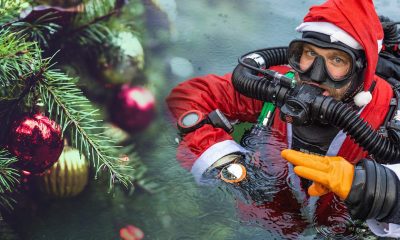Exploration
Confronting the Unknowns of Decompression with the First Electronic Rebreather
How did Electrolung inventor Walter Starck and his cronies decompress from dives to 100m/326 ft before the advent of dive computers or even constant PO2 tables? Dr. Starck explains his procedures and rationale. Deep stops anyone?
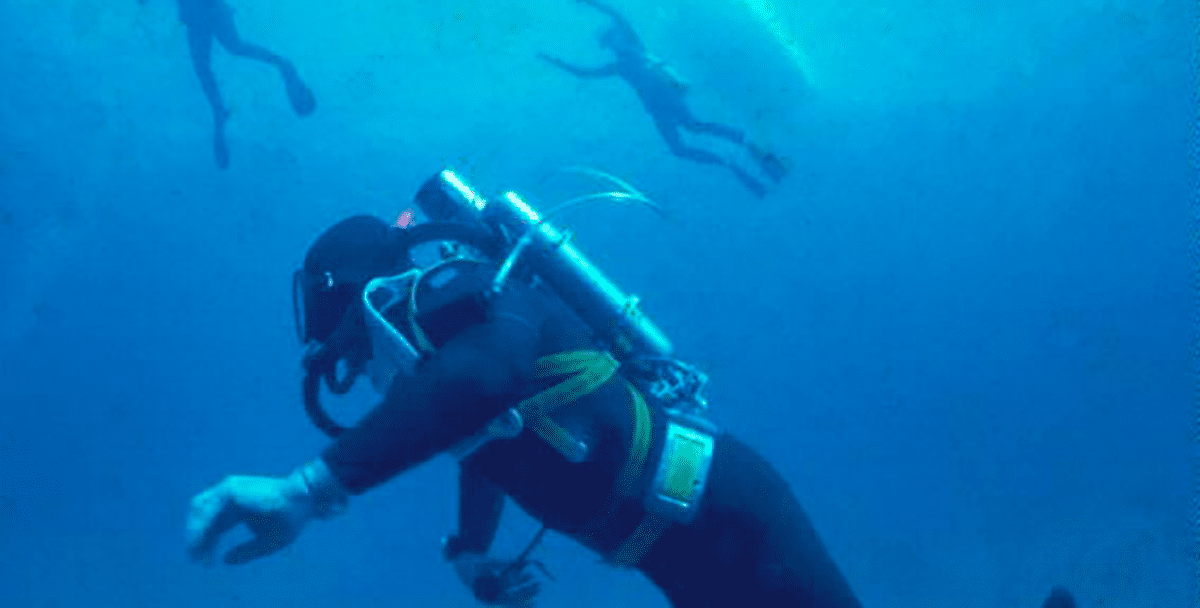
by Walter Starck
Photos courtesy of Walter Starck
The design and manufacture of the first commercially available, electronically regulated closed circuit mixed gas rebreather in 1968 presented a multitude of problems to be solved in the design and manufacture of the device itself. Successful development and production of the Electrolung presented an additional problem. Decompression tables were limited, and none were available for a constant partial pressure of O2 with a varying percentage of inert gas as occurs in an electronic rebreather. The US Navy tables were the only heliox tables readily available. Those used in the offshore oil industry were all treated as commercial secrets by the offshore diving companies. Decompression computers had not yet been invented.
To start with, I interpolated from the US Navy helium tables for an equivalent partial pressure depth for the Electrolung. Although, by today’s standards, this may seem unacceptably risky, it was less so than may appear. If immediate recompression is available at the first symptoms of any decompression sickness, progression to more serious levels is rare. When recompression is delayed for several hours, or more, to get to a chamber there is a high probability of increasing tissue damage requiring extended treatment and lengthy recovery or permanent impairment.
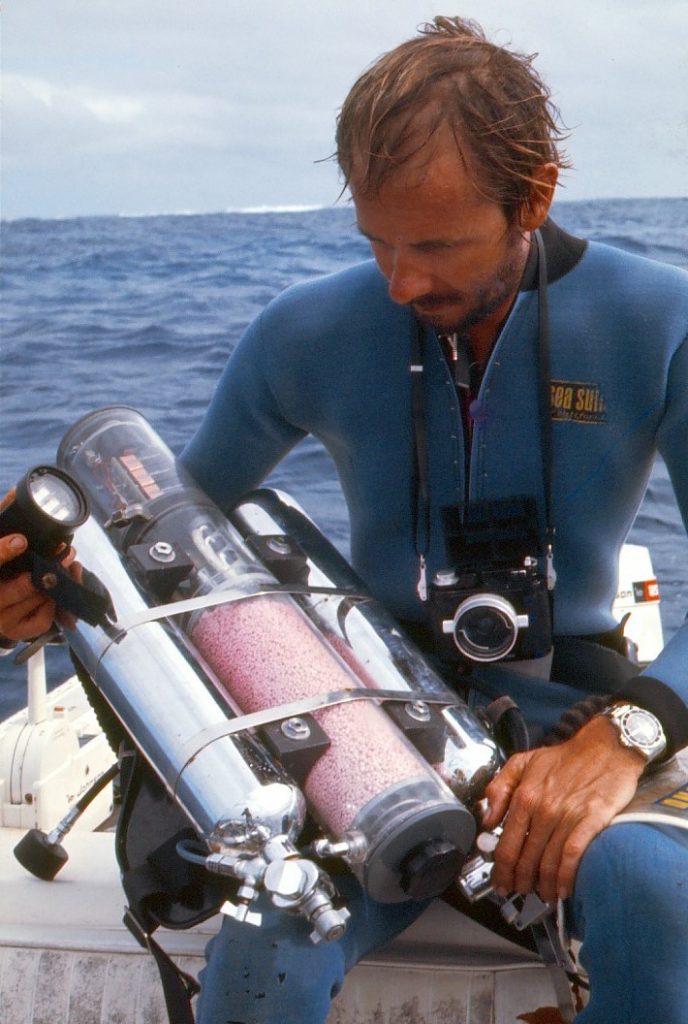
My research vessel, El Torito, was equipped with a large (42’’ x 12’) double lock recompression chamber which could comfortably accommodate two persons, or even three if needed. The inner lock was kept pressurized to 30 m/100 ft, so getting to 18 m/60 ft of pressure could be accomplished in less than a minute by just getting in, closing the outer door, and opening a valve to let the main inner chamber equalize with the entrance chamber. An oxygen rebreather also provided for 100% O2 decompression without the fire risk of pressurising the chamber with O2. Having a chamber immediately available reduced the risk of experimenting with decompression profiles to an acceptable level. In practice, there was only one incident where the chamber was needed, and that involved pushing the limits with a repetitive dive to 60 m/200 ft with only an hour surface interval.
While getting into the matter of decompression, I came across an interesting study by the Australian physiologist Brian Hill, who found that the pearl diving industry in northern Australia had developed (by trial and error, including numerous fatalities) a mode of decompression that started deeper, ascended slower, and ended deeper but was faster overall. Based on this, some relevant physics, and Hill’s own extensive lab work, he proposed a theory of what he called thermodynamic decompression. In this regard, he believed that the idea of avoiding bubble formation by keeping within a hypothetical limit of supersaturation is incorrect, as any degree of supersaturation results in a gas phase beginning to form as a thin film at tissue surfaces, which then begin to coalesce into sub-symptomatic bubbles.
In his view, the conventional tables were generating sub-symptomatic bends by allowing divers to ascend too quickly and then having to spend a lot of (decompression) time to prevent them from growing into symptomatic bends. If the bubble formation is avoided to begin with by allowing the inert gas to escape through the dissolved gas saturation window provided by the ability of tissues to metabolize O2, decompression can be optimized.
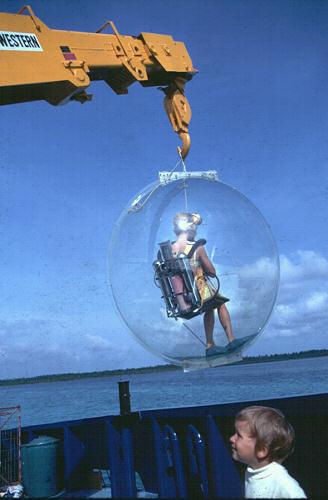
My study of his material left me with the impression that it was well founded, so I began to titrate decompression toward that direction. This led into a series of 92 m/300 ft dives with 15 minutes descent and bottom time, a slow 10 m/30 ft-per-minute or slower ascent time, a couple of stops for about two minutes at around 46 m/150 ft and 22 m/75 ft, finishing with 15 minutes on pure O2 at 10 m/30 ft. On different occasions, but not at the same time, three other individuals accompanied me, all without DCS in some 30 such dives.
The effort, resources, liability risk, and limited economic potential involved in endeavouring to develop a full set of tables of this kind, as well as my own prime interests in marine science and exploration, ruled against further pursuit in this direction. However, a few years later when I arrived in Australia with El Torito, I got in touch with Brian Hills and had the opportunity to spend several days with him in Adelaide. He went on to a distinguished career in decompression physiology at several institutions in the US and UK.
See accompanying Story: Electrolung: The First Mixed Gas Rebreather Was Available to Sport Divers in 1968
Dive Deeper:
For more on Hills and his thermodynamic theory, see: Brian Andrew Hills
Wikipedia: The US Navy’s Thalmann Constant PO2 Algorithm
NEDU: DEVELOPMENT AND VALIDATION OF 1.3 ATA P02-in-He DECOMPRESSION TABLES FOR THE MK16MOD1 UBA
InDepth (Four part series): Decompression, Deep Stops and the Pursuit of Precision in a Complex World by Jarrod Jablonski
UHMS: PROCEEDINGS: DECOMPRESSION AND THE DEEP STOP (2008)
Immersed: The International Technical Diving Magazine (Winter 1998), Starck, Walter 1998. In Water Recompression: Problem or Solution? by Walter Starck. Reprinted courtesy of DIVER mag.
InDepth: A New Look at In-Water Recompression (IWR)
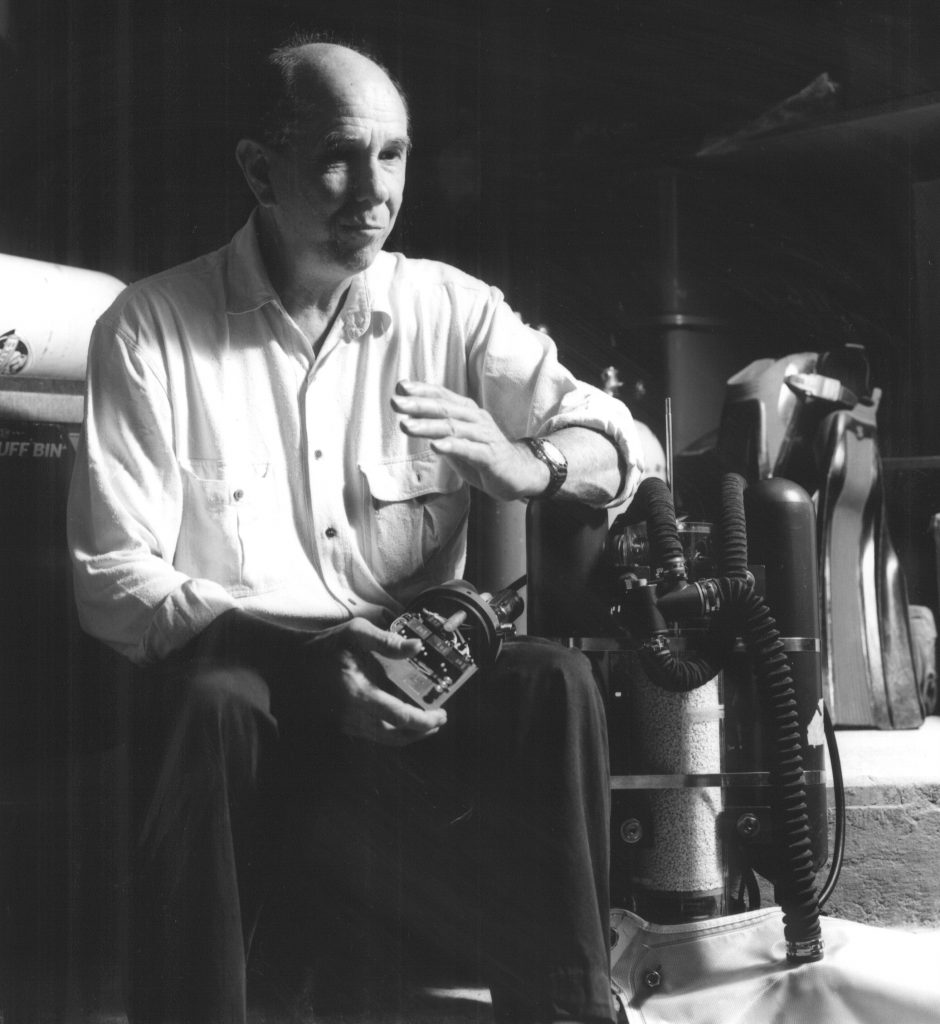
Walter Starck is one of the pioneers in the scientific investigation of coral reefs. He grew up in the Florida Keys and received a PhD in marine science from the University of Miami in 1964. Since 1978, his home has been in north Queensland, Australia. Throughout his career in marine biology, participating in expeditions around the world, Dr. Starck has been extensively involved with development of the technology required to facilitate his activities. In several instances patented inventions and commercial products have resulted. In addition to the optical dome port and the Electrolung other noteworthy achievements in this area have been: The Bang stick—a hermetically sealed underwater firearm for hunting and defense, underwater housings for numerous cameras and instruments, underwater lighting systems, a multipurpose commercial waterproof electrical connector, design of the unique research vessel El Torito, a 9 meter high-speed diving launch, a 24 passenger eco-tourism vessel, and the Oceanic 8000 Longboat. The longboat was a long narrow high efficiency powerboat inspired by the efficiency of the log canoes of the Solomon Islands. He has also built and flown an amphibious aircraft of advanced canard wing design using high technology composite materials. Recently (Aug 2017) he was senior author on an extensive update on the Alligator Reef study that brought the total species list for that locality up to 618 species.
Dr. Starck has authored over 100 articles and books, which include numerous technical and peer reviewed scientific studies as well as many articles in leading popular publications. His photography has been widely published in conjunction with his writing, and he has produced nearly 20 films and videos. Throughout his extensive career, he has managed to inspire not only admiration, but also the ire of some detractors who have taken umbrage at his efforts to inject what he believes to be “a rational perspective on human ecology into the eco-mania that has become epidemic in our struggling Western economies.” His criticisms of the “poor science and blatantly false claims widely used to support various environmental agendas” have earned him some criticism.





















